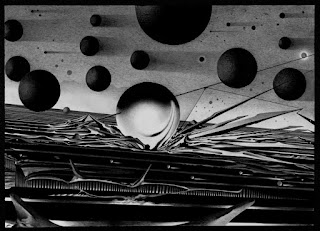Engineered crystals could help computers run on less power
Apr 2022, phys.org
Crystals are cool and all, but did you know that the total amount of energy the U.S. uses on computers has risen dramatically over the last decade and is quickly approaching that of other major sectors, like transportation.
This is a big deal, and despite the well-deserved environmental crypto-hate, we hear almost nothing about this. In the United States, roughly 30% of our energy is used in buildings (lighting, heating and cooling) another 30% for transportation, and the last 30% for industrial processes (gross estimation, see the US Energy Information Administration for real stats). Switching to CFL's alone, since about 2012, has already made a huge dent in our national energy expenditure (go figure, that was easy, and yet you almost never hear about this). Any other attempts to lower that expenditure are aimed at buildings and transportation, think tighter buildings with better insulation and cars with better fuel efficiency. We are absolutely not talking about how to wrestle with the computing sector, and it will be very interesting to see how this takes shape in the coming years.
via University of California - Berkeley: Suraj S. Cheema et al, Ultrathin ferroic HfO2–ZrO2 superlattice gate stack for advanced transistors, Nature (2022). DOI: 10.1038/s41586-022-04425-6
Note: According to the Energy Information Administration's statistics, the per-capita energy consumption in the U.S. has been somewhat consistent from the 1970s to the present time. The average was about 334 million British thermal units [BTU] (352 GJ) per person from 1980 to 2010. One explanation suggested that the energy required to increase the nation's consumption of manufactured equipment, cars, and other goods has been shifted to other countries producing and transporting those goods to the U.S.
Another Note: Lawrence Livermore Labs have devised a
connection between energy and information that allows for the creation of a cryptocurrency token that is directly backed by and convertible into one kilowatt-hour of electricity.
Image credit: Artwork by Anatoly Fomenko, Russian mathematician and artist from the 1960's and beyond.
These simple changes can make AI research much more energy efficient
Jul 2022, MIT Technology Review
They found that emissions can be significantly reduced if researchers use servers in specific geographic locations and at certain times of day. Emissions from training small machine-learning models can be reduced up to 80% if the training starts at times when more renewable electricity is available on the grid, while emissions from large models can be reduced over 20% if the training work is paused when renewable electricity is scarce and restarted when it’s more plentiful.
This has me thinking about the crypto-nomads who followed the rainy season across China to use the cheaper hydropower. Once we synchronize our entire energy system to the sun and the seasons, we'll be able to feed the army of computers being trained to replace us.
via Allen Institute for AI, Microsoft, Hugging Face, University of Washington: Measuring the Carbon Intensity of AI in Cloud Instances, Jesse Dodge et al, FAccT ’22, June 21–24, 2022, Seoul, Republic of Korea. https://doi.org/10.1145/3531146.3533234
Post Script:
Climate change: 'Sand battery' could solve green energy's big problem
Jul 2022, BBC News
Around 100 tonnes of builder's sand, piled high inside a dull grey silo.
Using low-grade sand, the device is charged up with heat made from cheap electricity from solar or wind. The sand stores the heat at around 500C, which can then warm homes in winter when energy is more expensive.
via Finnish researchers Markku Ylönen and Tommi Eronen, who came up with the sand battery idea.
Post Post Script:
The cryptopocalypse is nigh! NIST rolls out new encryption standards to prepare
Jul 2022, Ars Technica
Decision will be binding on many companies and change the way they protect your data.
In the not-too-distant future—as little as a decade, perhaps, nobody knows exactly how long—the cryptography protecting your bank transactions, chat messages, and medical records from prying eyes is going to break spectacularly with the advent of quantum computing. On Tuesday, a US government agency named four replacement encryption schemes to head off this cryptopocalypse. CRYSTALS-Kyber, CRYSTALS-Dilithium, FALCON, and SPHINCS+.










